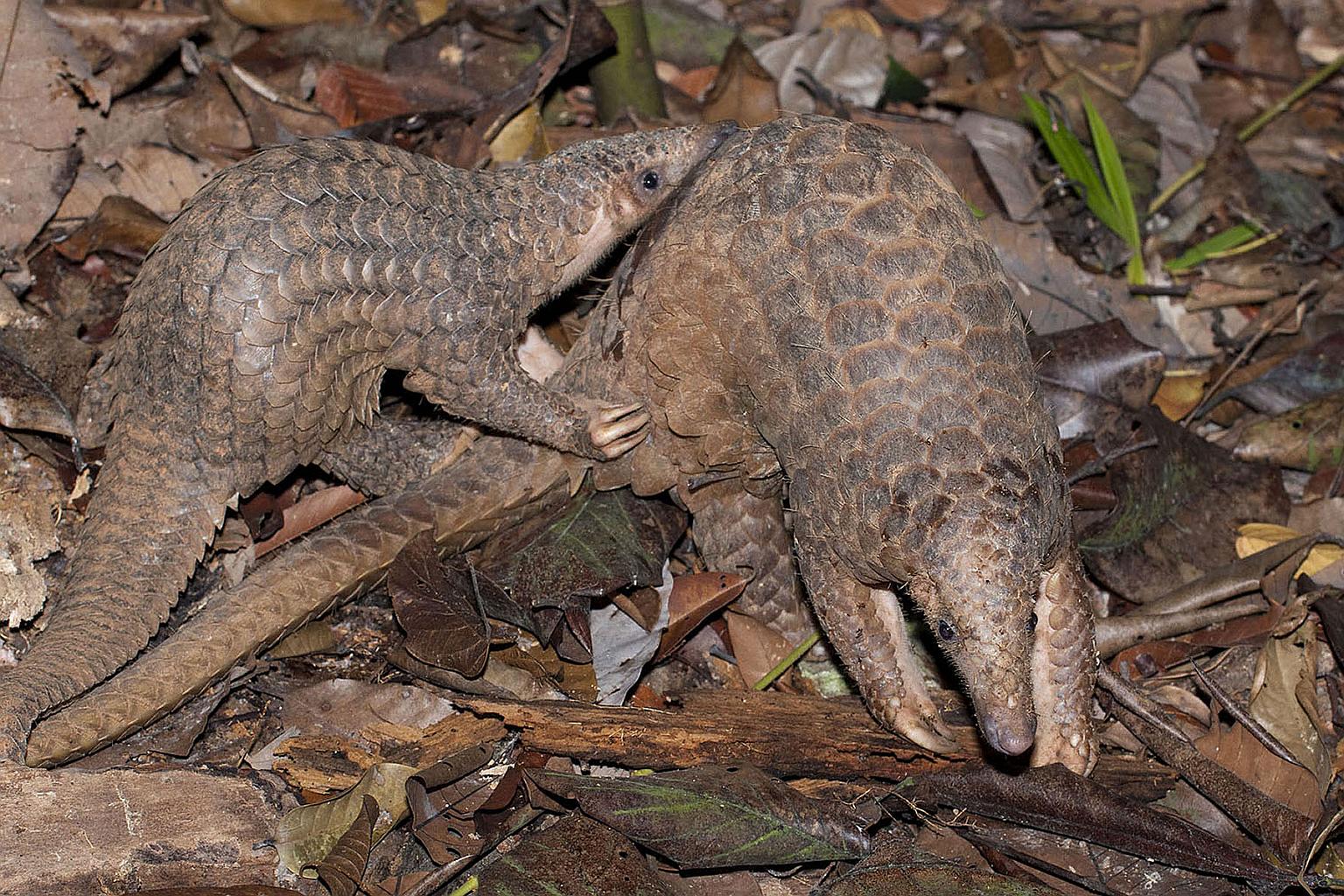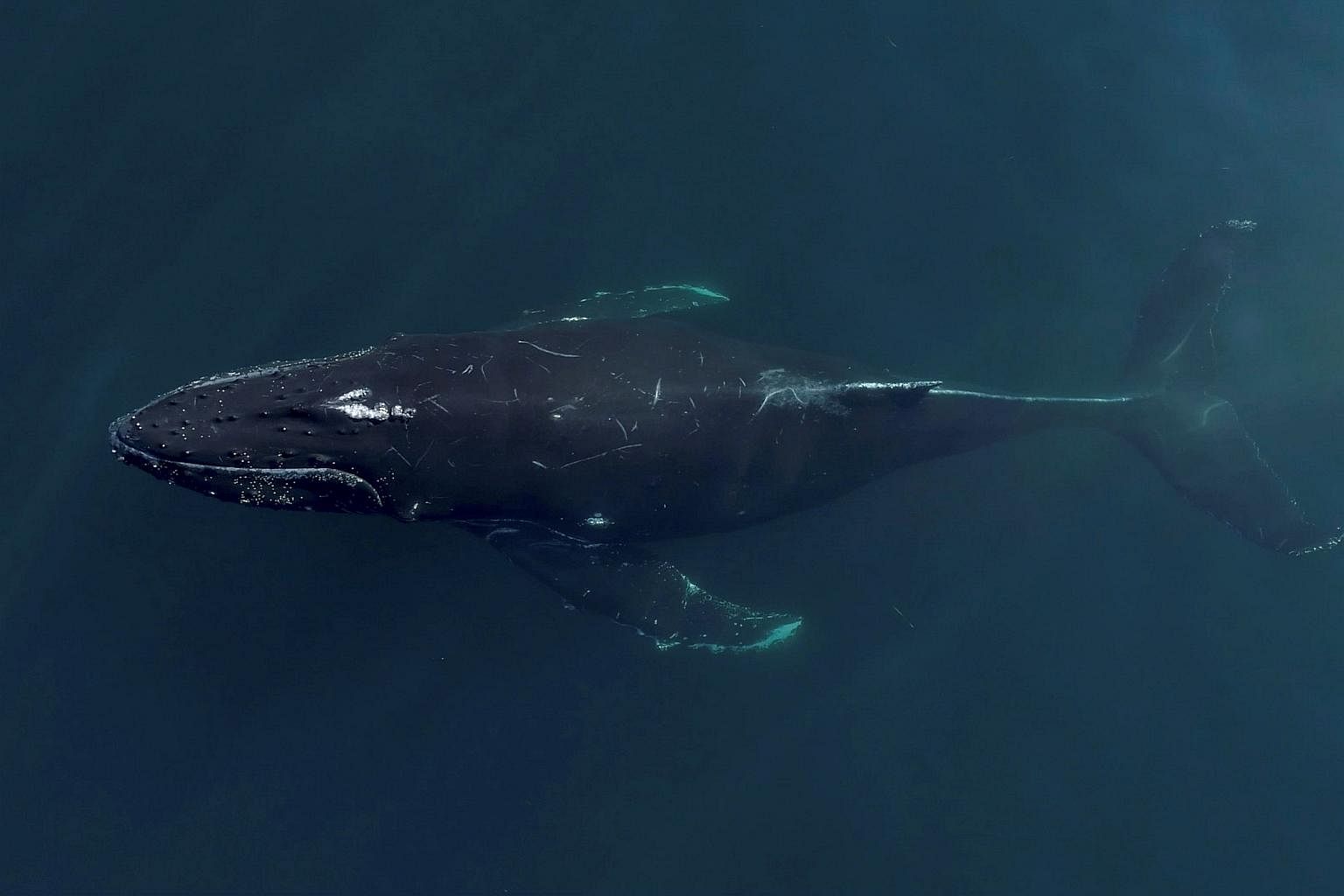Scrolling through Twitter in the month of February, a few things were apparent.
People adored whales and feared the extinction of pangolins. But the social media platform was comparatively silent about the plight of the hippopotamus, despite the heft of the animal that keeps people on safari in Africa on their toes.
All three had marked their "species awareness days" in a single week last month.
World Hippo Day fell on Feb 15, World Pangolin Day on Feb 20, and World Whale Day the day after.
But as our Twitter timelines showed, not all three were commemorated equally.
As conservationists and communicators who encounter these events on a regular basis, we were curious to find out if they really had an impact on raising awareness, and if people responded to various awareness days differently.
And so we did. Using statistical tools, we examined if the awareness days of 16 animals led to changes in the frequency at which people sought information about them on Google and Wikipedia. Both platforms are popular tools people use to find information.
As it turned out, such posts do not trigger the same information-seeking behaviour for all species.
Our data showed that seven animals (pangolin, polar bear, manatee, turtle, otter, tiger and wombat) saw an increase in searches on at least one platform.
The rest, including animals like the hippopotamus and rhinoceros, saw no statistically significant changes in information-seeking behaviour.
Published in February in the scientific journal Biological Conservation, these findings could have implications for how resource-strapped charities decide on their strategies to raise awareness.
Strategies to raise awareness for wildlife fall under a rather nascent field known as conservation marketing.
It is an area of research viewed with increasing interest, since insights into how the conservation message could be better marketed to the public may have cascading implications for the amount of resources allocated to such campaigns.
This is especially as social media campaigns have risen in prominence during the Covid-19 pandemic, when the ability to host in-person events has been crippled.
While the coronavirus ground activities to a halt, threats of extinction for some animals don't end.
They may even have increased during the pandemic, with communities hunting them for bushmeat or the illegal wildlife trade when other revenue streams dried up.
World Pangolin Day

Of the 16 awareness days studied, World Pangolin Day was by far the most successful.
The event correlated with an 11.2 per cent increase in Google searches, and a 208 per cent surge in Wikipedia page views.
Our data showed that the pangolin Wikipedia page views and Google relative search trends from 2015 to 2019 revealed peaks corresponding to World Pangolin Days.
The largest peak occurred with the event in 2017. That year, it coincided with a series of pangolin and Valentine's Day Google doodles over four days.
Google doodles are interactive elements that pop up on the search engine's home page, featuring mini-games and animations.
In 2017, the doodle highlighted information about pangolins, and included a game, which shared pangolin facts between levels - such as how it uses its long tongue to slurp up ants from the ground, or how pangolin babies get around by hitching a ride on their mother's tail.
The doodle also linked users to the World Wildlife Fund website, and the organisation reportedly received a substantial increase in pangolin-related donations.
The pangolin may be covered in armour, but its scales mask its gentle disposition.
Some time ago, one of us was involved in the rescue of a distressed pangolin stuck on a bridge on Singapore's offshore island of Pulau Ubin. The pangolin had formidable claws, but not once did it use them against the humans. It seemed to determined to perform sit-ups instead - constantly trying to curl itself into a ball.
In the wild, the world's only scaly mammal escapes predators by curling up in a ball, so their hard scales - made of keratin, similar to human fingernails - hide their soft parts.
Unfortunately, this defence mechanism is not effective against humans. Pangolins are poached for their scales, which are used for unproven medicinal purposes.
Today, the pangolin is considered the world's most trafficked mammal.
Conservationist Rhishja Cota, who founded World Pangolin Day in 2012, said she had been struck by the plight of the pangolin in 2009.
But people were ignorant about the animal. "Here in the United States, it used to be when I mentioned pangolins, people thought I was talking about 'penguins'," said the founder of Annamiticus, a wildlife advocacy group.
Ten years since the first event - which involved creating a World Pangolin Day website, developing content on pangolins and starting social media accounts - she has seen awareness about pangolins grow.
Ms Cota added: "Now, people see my pangolin tattoo and ask if I've heard of World Pangolin Day."
Popularity to apathy

There are eight species of pangolins in the world, and one of them, the Sunda pangolin, can be found in Singapore. But the animal is still often confused with armadillos or anteaters - which are creatures found only in the Americas.
Indeed, the relative obscurity of the pangolin could be a possible reason why it benefited from awareness-raising campaigns on World Pangolin Day.
Our findings suggest that well-known and well-loved species - which are usually animals with considerable physical presence, like hippos, whales, rhinos, giraffes and elephants - did not benefit much from their awareness days.
In fact, some animals such as whales even had fewer searches on their awareness days.
While it seems paradoxical that popular species appear to be overlooked by the audience during such campaigns compared with their less popular brethren, earlier research has suggested that the cultural abundance of popular species may lead to the misconception that they are not endangered, and thus, their plight is ignored.
Their constant presence in perennial campaigns could work against them, leading to information overload and fatigue among the audience that the campaigns are meant to reach.
Overall, the results suggest that less popular species may benefit more from promotional activities and resources.
Slacktivism
But to what extent can searching for information online be considered taking action for wildlife conservation?
Campaigning or online activism is often labelled as slacktivism, the act of supporting a cause online with little effort or commitment.
But translating awareness to action is an incremental process, not unlike sowing seeds of knowledge and waiting for them to germinate.
Some groups reported a rise in donations around the species awareness days that they organise campaigns around.
United States-based Bat Conservation International reported a 48 per cent increase in donations during Bat Appreciation Day on April 17, according to a spokesman for the organisation.
Our findings also showed that every individual could have their own sphere of influence.
Models showed the number of times that awareness day tweets were shared had a moderate correlation with Wikipedia page views. This suggests that greater sharing and exposure to social media messaging could lead to people seeking information about wildlife independently.
In turn, the type of tweets that were linked to more shares contained a strong call-to-action message. This requires an effort from the reader, and could include taking action such as visiting a website or sharing knowledge, and could thus reinforce the message.
As Ms Cota says, the platform created by a species awareness day provides a tremendous opportunity. "When you have such a diverse participation base - schoolchildren, non-government organisations, zoos, corporations, local businesses, universities, intergovernmental organisations, governments - it can really bring a species into the mainstream."
• Marcus Chua is a mammal researcher at the National University of Singapore's (NUS) Lee Kong Chian Natural History Museum, while Associate Professor L. Roman Carrasco is from the NUS' Department of Biological Sciences. Audrey Tan is the environment correspondent at The Straits Times.
• More on the findings can be found here.

